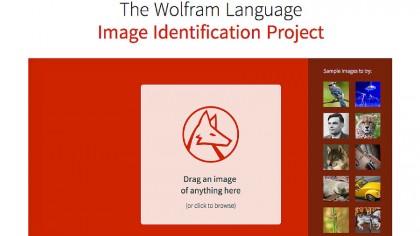Is the internet drowning in photos?
Smartphones and cameras snapped 880 billion photos in 2014

Photos are the life-blood of the digital age – we used smartphones and cameras to take 880 billion photos in 2014, but how do we find what we need? With 670 million photos uploaded to Flickr in 2014 and with Instagram receiving 70 million per day, what sorts the wheat from the chaff? Software, that's what – there are algorithms emerging that can categorise, sort and even find beauty hidden within zettabytes of data, with all kinds of image recognition and time-lapse tech now emerging, too.
Are there now simply too many photos online? "There's no such thing as too many in my opinion, but we're definitely reaching the point where we won't be able to see most of them," says Appu Shaji, head of R&D at startup online community photo market EyeEm, who adds that the total number of photos taken is roughly doubling each year.

Capturing patterns
Cue a new algorithm from EyeEm that distinguishes beauty in a photo purely from a pixel level. "We have a huge repertoire of photos that are taken by great and talented professional level photographers [and] we also have instances of photos taken by photographers like you and me," says Shaji. "The algorithm we have captures the patterns that are unique to the passionate and great photographers, and also tries to understand the patterns that separate these two genres of photographers."
Shaji pulled together Berlin's best photographers and artists and asked them to judge the same images. By building his code based on their input, he's slowly made the software good enough to match the taste of a person instead of a machine.
But isn't a truly great photo one that breaks all of the usual rules? "What we are looking for is what is unique among the great photographers, and the photography they produce," says Shaji. "The patterns that break the rules in a creative way is what we are trying to capture."

Automated identification
Identifying what's in a photo without involving any human eyes has long been a goal for computer scientists. Stephen Wolfram, Founder & CEO of Wolfram Research and creator of WolframAlpha, thinks he's done it.
"I'm excited to be able to say that we've reached a milestone: there's finally a function called ImageIdentify built into the Wolfram Language that lets you ask, 'What is this a picture of?' – and get an answer," he writes on his blog.
Sign up to the TechRadar Pro newsletter to get all the top news, opinion, features and guidance your business needs to succeed!
The resulting Wolfram Language Image Identification Project can be used by anyone; simply drag any image into the browser, or select a photo on a phone's camera roll, and it will be identified. It's absolutely not perfect – it identified an image of Stephen Wolfram himself as 'instrumentation', and the Moon as Pluto – but it correctly recognised a cat, a flower and a church.
Jamie is a freelance tech, travel and space journalist based in the UK. He’s been writing regularly for Techradar since it was launched in 2008 and also writes regularly for Forbes, The Telegraph, the South China Morning Post, Sky & Telescope and the Sky At Night magazine as well as other Future titles T3, Digital Camera World, All About Space and Space.com. He also edits two of his own websites, TravGear.com and WhenIsTheNextEclipse.com that reflect his obsession with travel gear and solar eclipse travel. He is the author of A Stargazing Program For Beginners (Springer, 2015),
